How To Create A Winning Content Strategy For Your Blog (2019 Edition)
You can’t turn a digital corner without coming across another “must-read” piece of content. It’s everywhere. According to the Content Marketing Institute, 70% of B2B marketers created more content in 2018 than 2016, and that number is set to increase again this year. The thought is both exciting and terrifying.With so much content already out there, how can you possibly stand out? The key is to be strategic with everything you do. Remember: you’re not competing to produce more content than anyone else on the planet; you’re competing to win the attention of readers. So how do you get started? Let’s start at the beginning.
The content is getting updated!
Why You Need a Content Strategy
I’m going to hit you with a stat to kick things off:60% of organizations with a written content strategy are effective, compared to only 32% with a purely verbal content strategy being effective.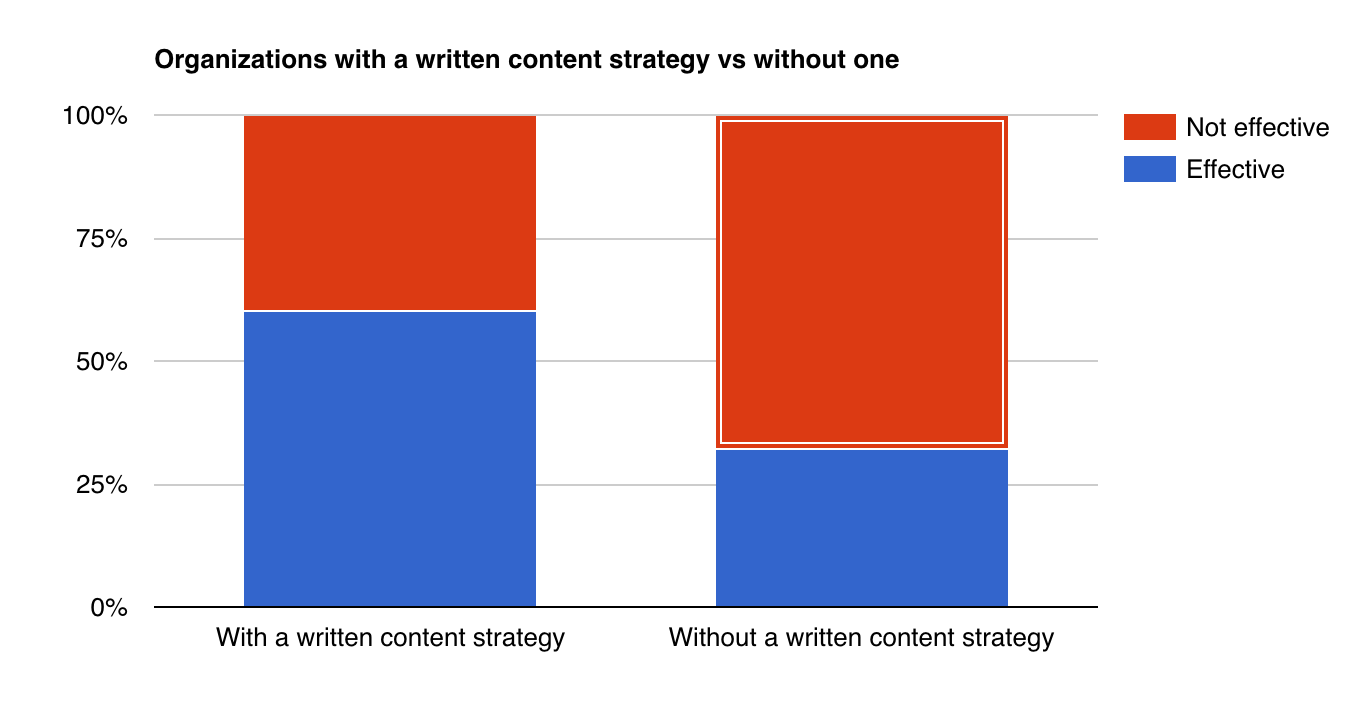 Source
Source
Sure, you might have a “kind of” content strategy floating around in your head; you know, a couple of blog posts that you want to get written at some point, but nothing concrete, or a few video ideas you’ve got written down in the back of a battered notebook. But in order to see results – you know, the kind that get you on the first page of Google or mentioned by a major publication – you need to have a plan. All great conquests start with a plan.Add this to the mammoth amount of content that’s being published every single day (2 million blog posts are published every 24 hours), and it becomes an uphill struggle through thick treacle to stand out. Again, this is why you need a strategy.
Things to Think About Before You Create a Content Strategy
But before you even start mulling over blog post ideas and conjuring up inspiration, there are a few things you need to consider.
1. Who You’re Creating Your Content Strategy For
Serving the needs of your audience is at the core of any good content strategy. But in order to serve those needs, you need to know what they are in the first place. It’s not enough to say you want to target men between the ages of 30 and 50, instead you really need to get to know them, their struggles, and what they need help with. “Think about your audience before you start,” says Jerod Morris of Copyblogger. “Then listen. LISTEN. And your audience will tell you what works and what they crave more of. If you do this over the long haul, you’ll win.”Once you know the target reader you’re looking to reach, you can create a strategy that’s based around what they want and need to consume.
2. The Problem Your Content is Going to Solve
Once you’ve nailed your target reader, you can get to the bottom of their Big Major Problems to find out what they need help with and how you can help them solve that problem with your content.
3. SEO Keyword Research
Which keywords do you want to target with your content? These phrases act as indicators to Google so it knows what your content is about. It can then serve it up to people who are asking relevant questions via search. Use a keyword tool (like Google Adwords Keyword Tool) to determine what keywords in your industry have the most searches and the least competition and create a list of ideas based around these keyword topics. 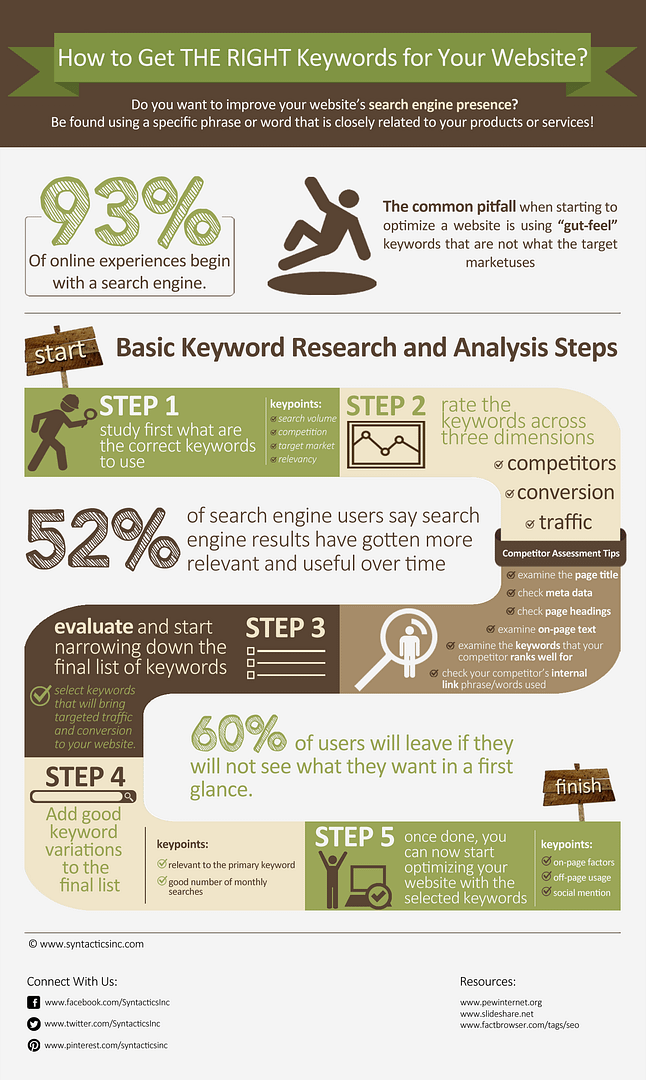 Source
Source
4. How You’ll Schedule and Manage Creation and Publication
Some might say creating the content strategy is the easy part; after that comes the relentless task of creating the content and publishing it. To do this, you’ll need to schedule what’s due to be published and when.Do you have any tools you can use to implement this? How will you be able to share the schedule with your team (if you have one)? Consider tools like Google Calendar and Trello for this to make it easy, seamless, and collaborative.
5. Content Distribution
While your content strategy is mainly concerned with the kind of blog posts you’re putting out there, you’ll also want to think about where you’re going to distribute and promote that content.There’s that saying: “if a tree falls down in the woods with no one there to see it, did it ever happen?” It’s the same with content. If no one sees your posts, you might as well not have published them.
6. How You’ll Measure Your Content Strategy
Part of creating a successful content strategy for your blog is learning what works and what doesn’t, and you won’t know that until you put things into action.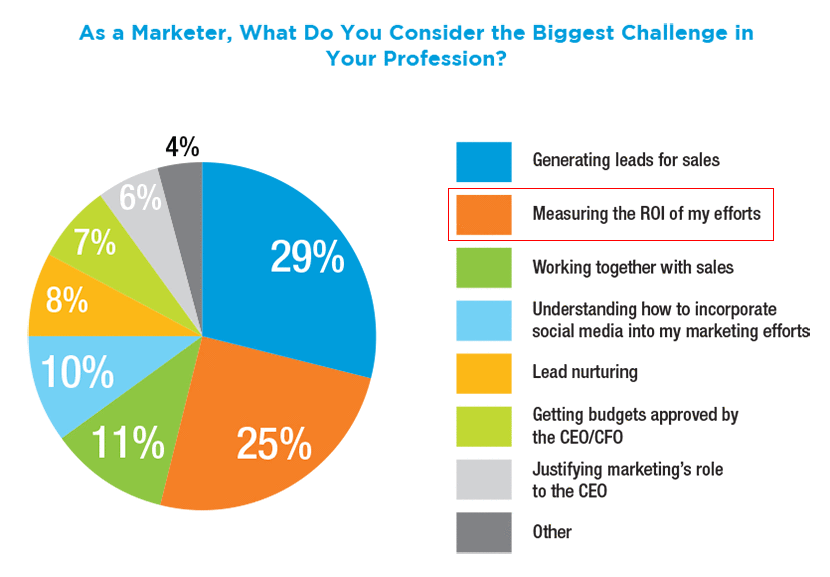 Source
Source
For most content marketers, the biggest challenge is measuring the results of their efforts. Once you’ve got a solid goal in place for your strategy, it’s much easier to determine whether what you’re doing is working.For example, if your aim is to boost SEO rankings and get more traffic, you can measure how much traffic you’re getting into your blog posts via Google through Google Analytics.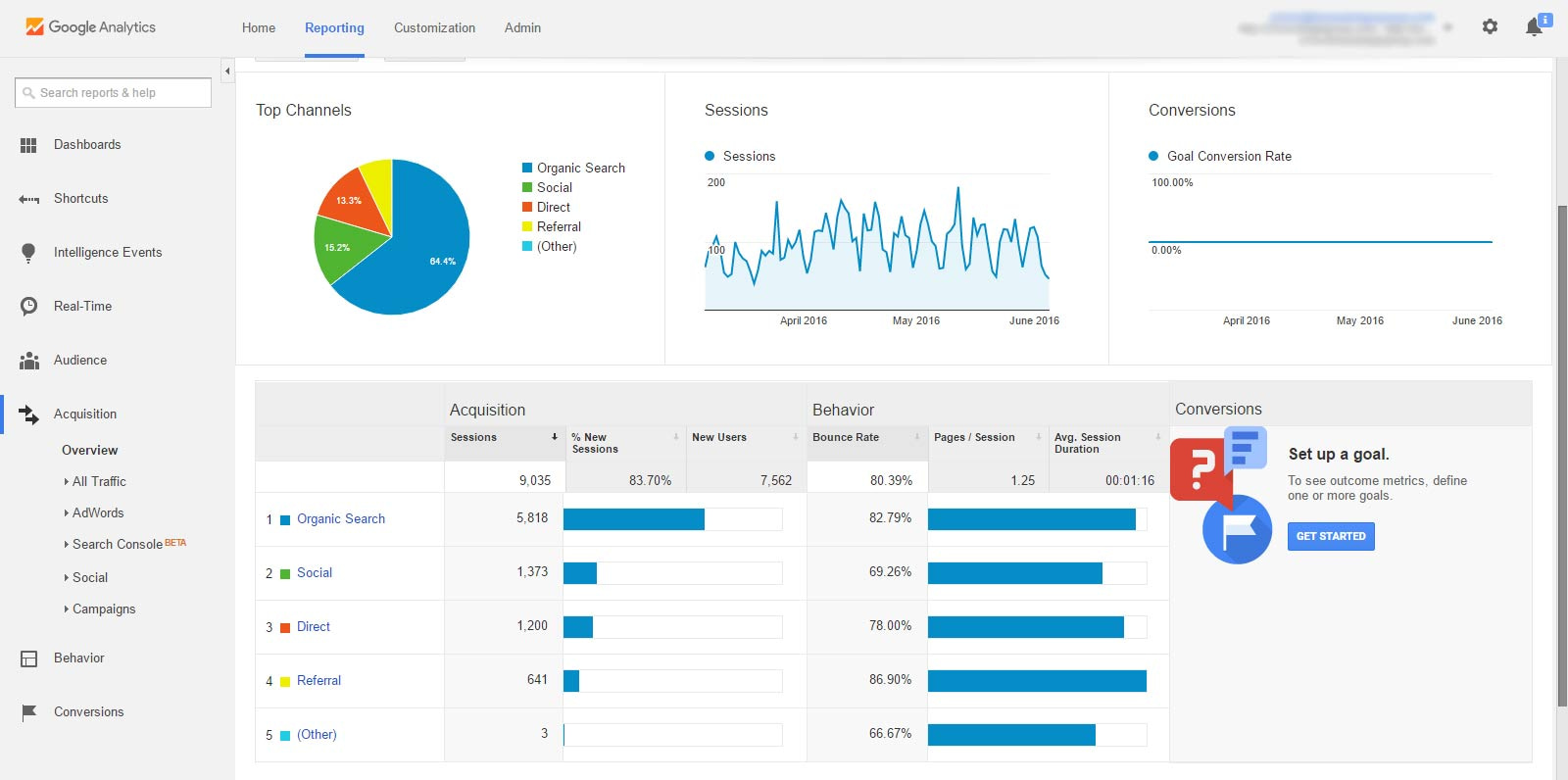
The Step-by-Step Guide to Creating Your Content Strategy Template
1. Define Your Goal
Every plan needs a goal.The end game of your content strategy will help drive the kind of content you create and help you measure whether what you’re doing is successful or not.Make it tangible too, if you can. Do you want to:
-
- Become known as a thought leader in your industry (and what will that look like in realistic terms)?
- Raise brand awareness?
- Boost your SEO rankings and get more traffic?
- Be mentioned in top online publications or by influencers in your industry?
When you know what you want the end point to look like, you’re able to craft your content to fit that goal. For example, if your goal is to become known as a thought leader in your industry, you might publish one or two really long, juicy pieces each month rather than five shorter pieces geared more towards an SEO boost.
2. Conduct Audience Research
Remember earlier when I said you need to really get to know your audience?You’re probably wondering how you can do that without it becoming, well, a bit stalker-y. The key here is to think about who you are trying to attract and convert, and ask yourself: “Who would benefit from my services and where do they hang out?”For example, if you sell software for florists, you’ll probably find a lot of potential readers hanging out on Instagram because it’s a very visual channel that lends itself perfectly to presenting flowers. You can also use tools and methods like:
-
- Scouring relevant forums to find key problems and struggles your target reader has
- Using Facebook Insights to determine the kind of people already interacting with your content (you can find out the top pages people like in different categories, the location and language of your top interactors, and even their previous purchase behavior)
 This information will all come together to fuel your content topics, but more about that in a mo.
This information will all come together to fuel your content topics, but more about that in a mo.
3. Run a Competitor Analysis
Chances are, there’s someone out there in your industry already doing great stuff with their content (with 2 million blog posts published every day, it’d be weird if there wasn’t). Tapping into what your competitors are doing is a great way to determine what’s working. It’s likely that similar brands have similar audiences, which means that the people reading their posts are also the kind of people you want to read your posts. BuzzSumo is a great tool for checking out the most popular posts on your competitors’ sites. You can enter the domains of your top competitors and discover which posts have been shared the most: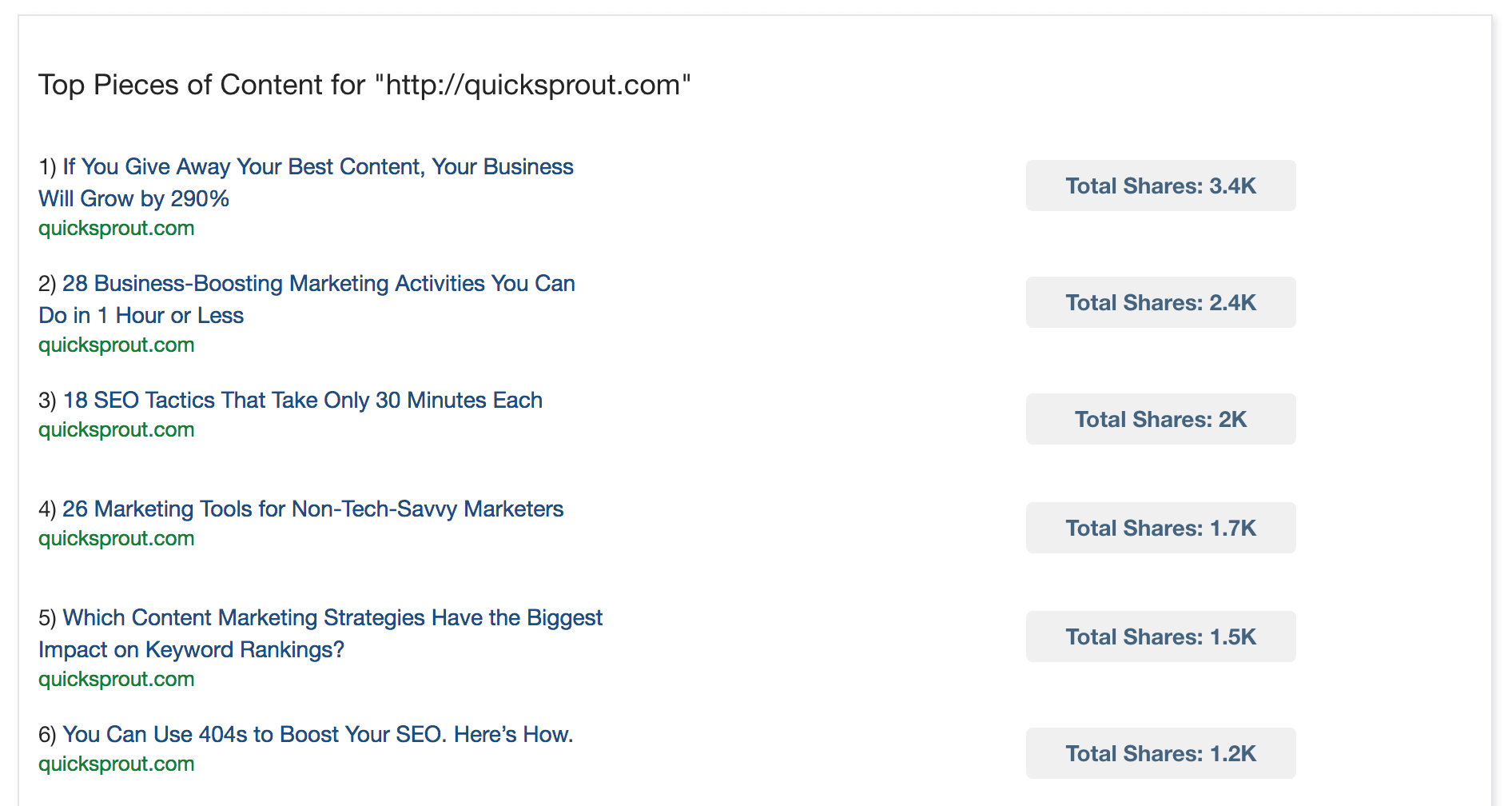 But the tool also gives you extra information that’s useful for your strategy too, like the word count of posts that get the most shares:
But the tool also gives you extra information that’s useful for your strategy too, like the word count of posts that get the most shares: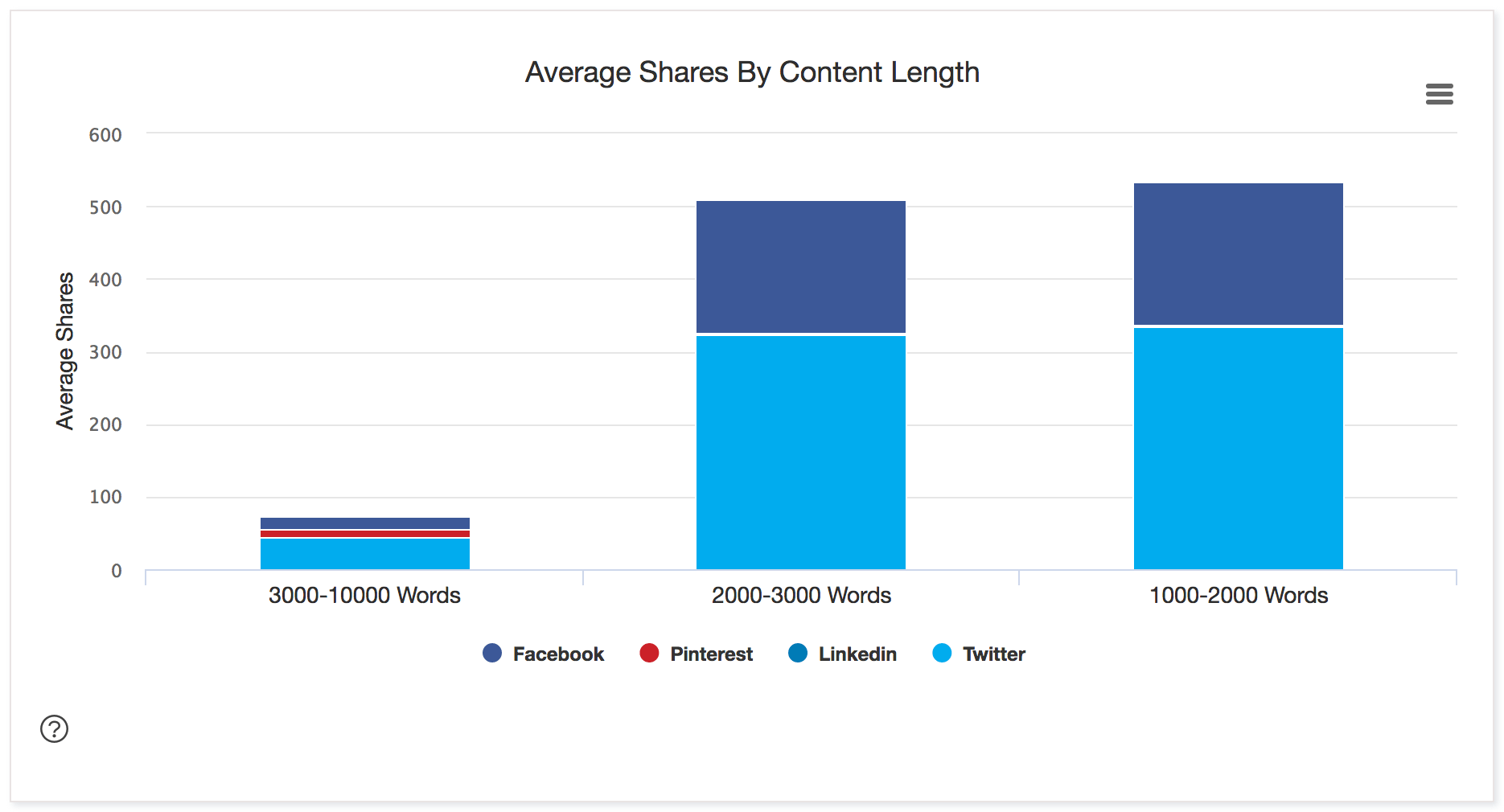 You don’t want to be a copycat, though.No one likes a copycat.Rather than just mindlessly reeling off the same content as your competitor (which isn’t a great strategy because someone’s already been there, done that, and is higher up in search rankings because they did it before you), you want to use your competitor research to make similar content that’s 10x better. When you find popular posts, ask yourself:
You don’t want to be a copycat, though.No one likes a copycat.Rather than just mindlessly reeling off the same content as your competitor (which isn’t a great strategy because someone’s already been there, done that, and is higher up in search rankings because they did it before you), you want to use your competitor research to make similar content that’s 10x better. When you find popular posts, ask yourself:
-
- What have they missed out?
- Can I add my own unique experience or a personal story to make it more relatable?
- Can I integrate data and research to make it more credible?
- Does it solve the key problems my target reader has?
You can then bring all this together to create content that you already know is popular (because your competitor has seen success with it), but that’s even more epic and even more suited to your target reader.
4. Brainstorm Content Ideas
Now you know what content works and who you want to dish that content out to, it’s time to come up with some ideas.After your competitor research, you’re probably going to want to create some original content geared especially towards the pain points of your target reader (which might be slightly different to the target reader of your competitor).There are plenty of ways you can do this, including:
-
- Using BuzzSumo to search for a relevant keyword and seeing what the most popular posts are on that topic:
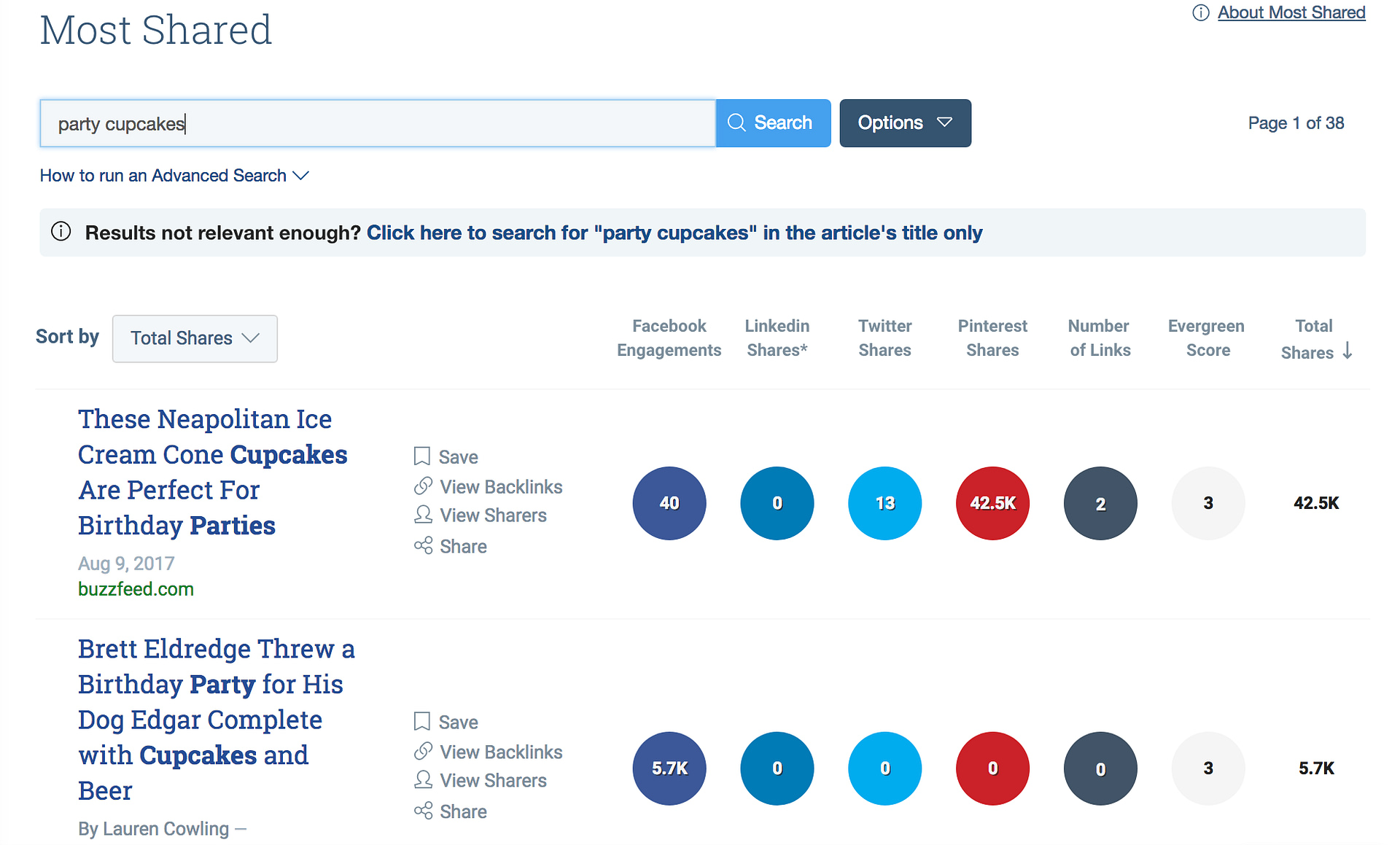
-
- Scrolling through Quora to find questions that people have around topics in your industry:
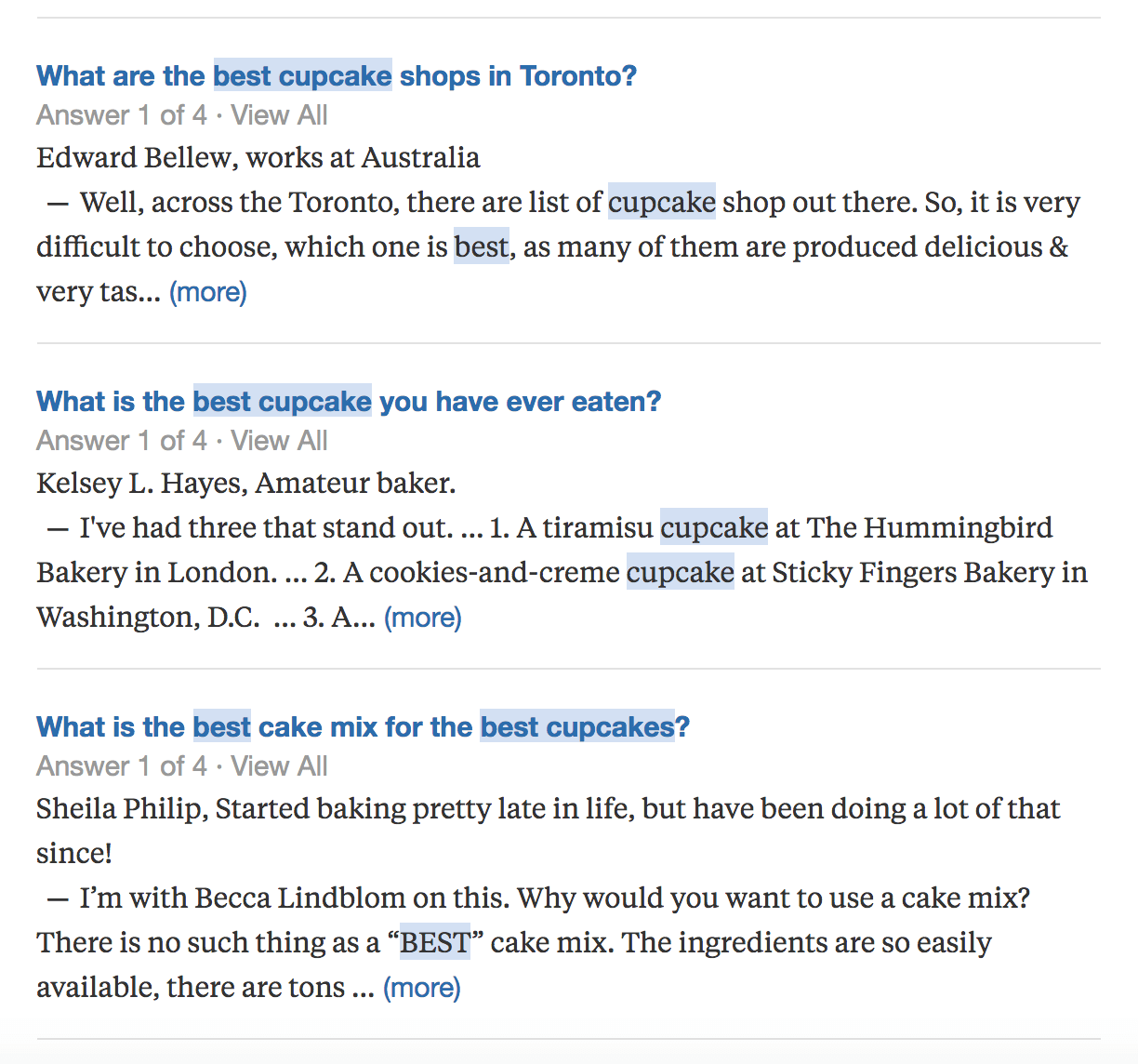
-
- Filling up your Feedly (or another blog reader) with relevant blogs and regularly checking to see what others in your industry are publishing to stay on top of trends.
- Browsing relevant SubReddits to find key questions your target readers are asking and to see what other content people are posting around that topic:
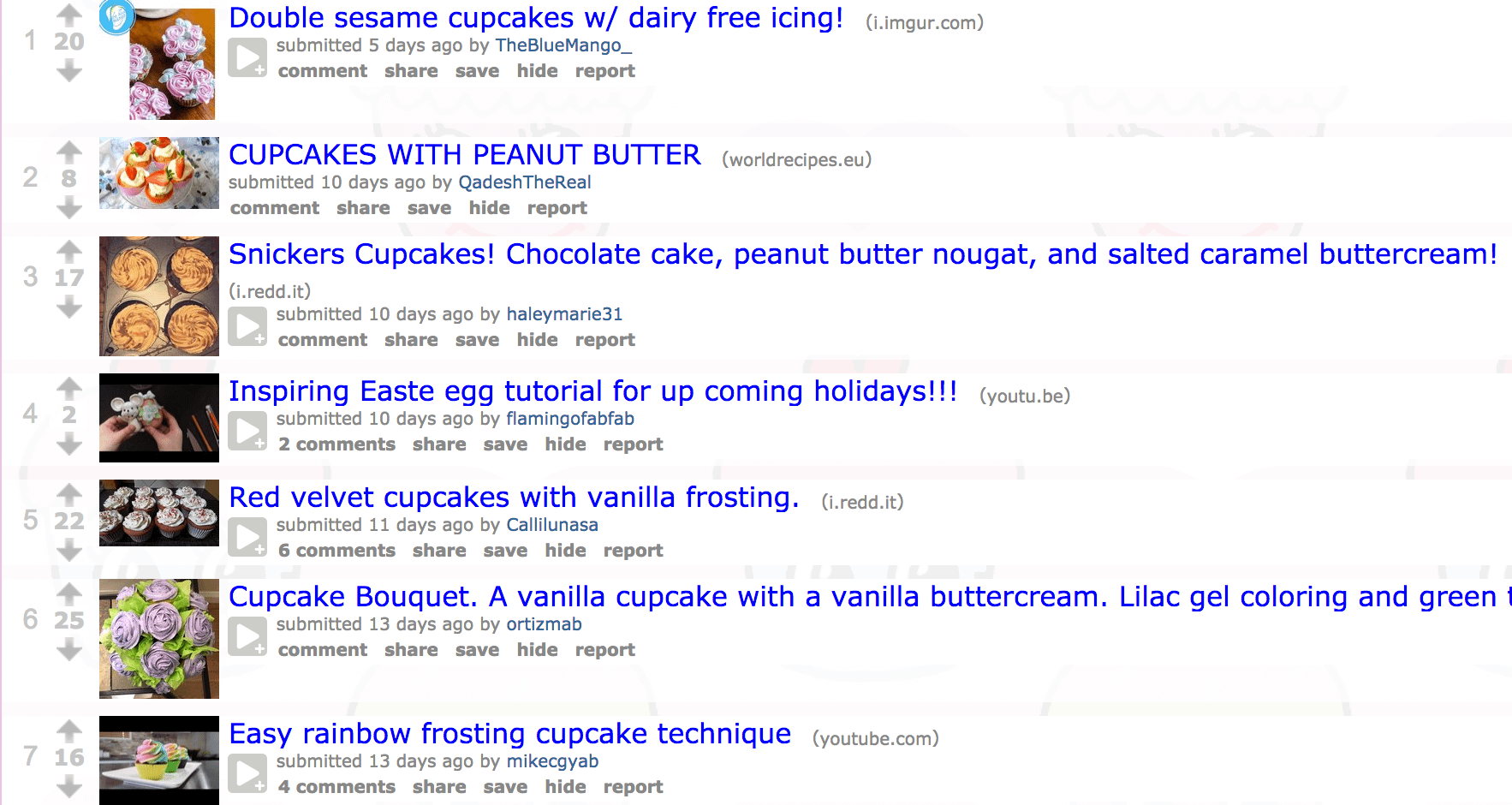
-
- ASKING your audience. If you have a sizeable following on social media or a decent-sized email list, you can send out a short survey to discover the types of content your audience want to see – straight from the horse’s mouth!
5. Choose What Kind of Blog Content You Want to Create
It’s easy to think that written blog posts are the only kind of content you can create. But oh boy are you wrong if you think that. There are so many different content formats to choose from, including videos, infographics, images, and lists, all of which fare differently on different topics and for different audiences. Source
Source
This graph here shows that infographics get the most shares, while videos get the least, but that’s not always the case for every industry.Ready to be punched with inspiration?Let’s do this.
a. Blog Posts
Of course, there’s the standard blog post with written information. All very traditional, all very lovely. According to Buffer (and science), the average blog post is a seven minute read which translates to about 1,600 words.
 b. Gated Content
b. Gated Content
For most businesses, the aim of content is to get subscribers and convert them into customers or clients.One of the easiest ways to do this is to offer gated content; that is, content that people have to hand over their email address for. This might be things like:
-
- eBooks
- White papers
- Reports
- A gated video series
- A free email course
c. Experimental Content
If you want to stand out, you’ll have to do something that’s worthy of standing out for. If you’re always publishing meagre 500-word posts on similar topics that don’t really give the reader anything, you’re not going to see much success.But to find out what’s really going to give your strategy a kick up the butt, you might have to get experimental. We’re talking things like:
-
- User generated content
- Comics, cartoons, or illustrations
- Visualizations
- Live videos
- Embedded Tweets
- Memes
- Podcasts (in 2016, 57 million people listened to podcasts each month)
- Slideshare presentations
d. Videos
Did you know that videos are 40x more likely to get shared on social media than other types of content? Switching up your content between video and written text might just be the thing you need. Or, alternatively, you can also repackage written blog posts into videos to make the most of your content ideas.
6. Create an Editorial Calendar
Then comes the final step (well, the final step before you have to start actually creating the content). When you’ve learned about your target reader, discovered their Big Major Problems, found inspiration from your competitors, and decided what type of blog content you want to produce, it’s time to put it all down in an editorial calendar.This will help your team figure out:
-
- What content is going to be published and when
- Whether there’s a public holiday coming up that can fuel content ideas
- When deadlines need to be met
- When content needs to be promoted and where it needs to be distributed
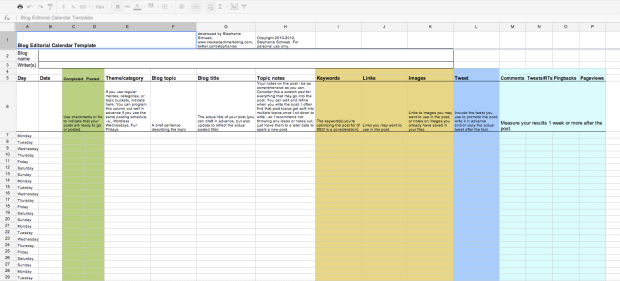 Start by listing the topics you want to cover and spreading them out over the month and working backwards from there to determine when you need to start creating to when you can finish promoting.
Start by listing the topics you want to cover and spreading them out over the month and working backwards from there to determine when you need to start creating to when you can finish promoting.
7. Create and Measure
Now it’s time to run with your content strategy! You’ve got everything in place to start putting together epic content and seeing what results it gets.Remember: In order to know what’s working, you’ve got to measure those results. So, for the first 3-6 months, you’ll need to constantly tweak your strategy based on the results of the previous month. Ask yourself:
-
- Are certain types of content performing better than others?
- What blog topics get the most shares/views/comments?
From this, you can optimize your strategy for the next month using the results and keep tweaking until you’re have a strategy that constantly gets you the results you want.
Is Your Content Strategy Up to Scratch?
Creating a content strategy (and not just any content strategy, but one that works) is a daunting task. There’s so many moving parts that come together to create the bigger picture, but with these simple steps, you’ll be able to put together a simple strategy that drives you towards your goals. Once you’ve figured out who you’re gearing your content towards and what results you want to get from it, you can start generating fresh content ideas that solve a key problem your audience have and measuring how they react to that content.

